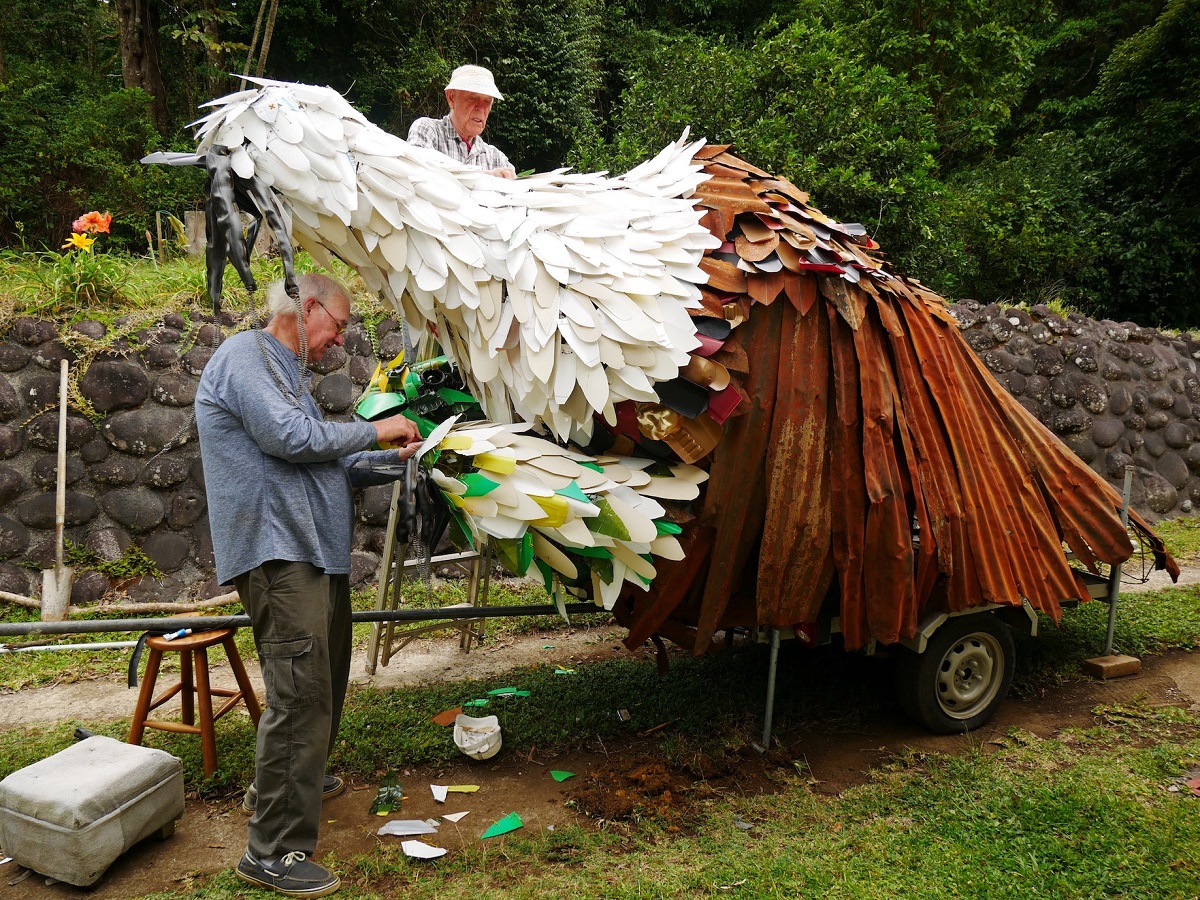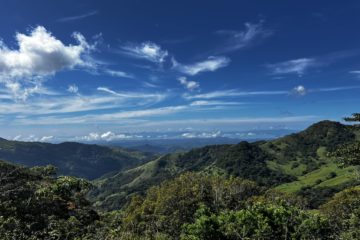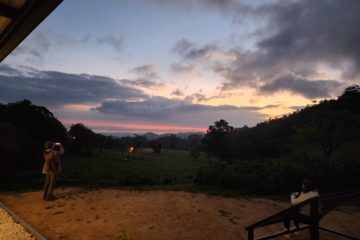Constructing the Bell-bird Sculpture in Monteverde: A Tale of Art, Recycling, and Environmental Activism
Paul Smith, a former dairy farmer turned artist, recounts his journey of creating the Bell-bird Sculpture in Monteverde, Costa Rica. Having explored various artistic mediums, from painting landscapes to crafting musical instruments, Smith embarked on a new endeavor inspired by his friendship with John Frannea, a passionate advocate for conservation.
The project aimed to sculpt a monumental Bellbird family using recycled materials, symbolizing the plight of this endangered species whose distinct call resonates through the Monteverde canopy. Venturing into the local recycling center, Smith and Frannea gathered plastic bottles of varying hues, confronting the stark reality of plastic waste juxtaposed against the pristine natural environment.
Bending rebar into the intricate forms of the Bellbirds, Smith meticulously crafted each detail, while Frannea ingeniously repurposed plastic bottle fragments into vibrant feathers adorning the sculpture. Despite challenges in sourcing specific colors, serendipity intervened with the discovery of a dilapidated structure offering the perfect hue for the Bellbirds’ wings.
With communal effort, the Bellbird Sculpture was mounted onto a mobile trailer, poised to embark on a symbolic journey advocating against climate change. Utilizing wine bottles for the eyes, the sculpture serves not only as a work of art but also as a vehicle for environmental education, envisioned to roam across parks and school playgrounds.
Smith reflects on the ephemeral nature of the sculpture, acknowledging its eventual disintegration against the backdrop of humanity’s awakening to environmental stewardship. As the Bellbirds gracefully disperse, feather by feather, Smith implores future generations to heed the message encoded within their creation, preserving the ecological balance of the cloud forest.
The Bell-bird Sculpture stands as a testament to the intersection of artistry, conservation, and activism, echoing the urgent call to safeguard our planet’s biodiversity for generations to come.

We committed ourselves to the project with a trip to the large recycling municipal shed where we collected white, brown, green, yellow and gold plastic. The mountains of clear water bottles with their unclear destinies shocked me. Here in Monteverde, our spring water is crystal pure. Nevertheless, we incur a great energy cost to the planet by transporting truckloads of water in small plastic bottles up and down the mountain. The plastic gets reshipped to the United States for reprocessing, goes to landfills, clogs rivers, and covers beaches.
Soon we were bending rebar into the shape of a giant Bellbird family: a male, a female and two of their young under spread-out wings, 10 feet high and 15 feet long. My job was to confirm that our bent rebar really looked like the Bellbirds. Then, along with John, I cut hundreds of feathers out of the plastic bottles, drilled holes in each one, and wired them, feather by feather, on to the chicken-wire mesh covering the rebar.
We had no problem finding white bottles to make the male’s spectacular white head, nor the yellow and greens for the mother and children. Our problem soon became finding the bright sienna colors for the male’s wings, tail, and back. As usual, a solution fell from the sky when I noticed a burned-down restaurant with a collapsed, bright, rusty tin roof — exactly the color we needed for all of the remaining feathers. We made our raids to this sorry site in the daylight, glad to be met only with polite smiles.
Taken from:
Resisting climate change feather by feather in Monteverde

